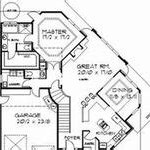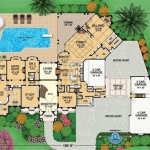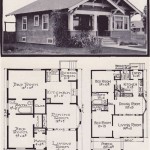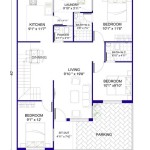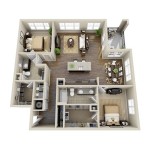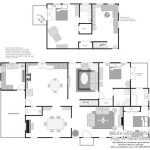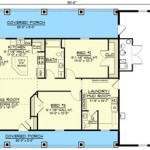Floor Plans for Tiny Homes
Tiny homes have become increasingly popular in recent years, offering a more affordable and sustainable lifestyle. These compact dwellings can range in size from 100 to 400 square feet, making them perfect for individuals, couples, or small families. While tiny homes may be small, they can still be incredibly functional and comfortable with careful planning. Floor plans play a crucial role in designing a tiny home, ensuring that space is used efficiently and that the home meets the specific needs of its occupants. Here are some key considerations for creating floor plans for tiny homes:
Multifunctional Spaces
In a tiny home, every square foot counts. To maximize space, consider designing multifunctional areas. For example, a living room could also serve as a dining area or a bedroom could incorporate a home office space. By incorporating multiple functions into a single room, you can create a more spacious and livable environment.
Vertical Space
Another way to maximize space in a tiny home is to utilize vertical space. Opt for lofted beds to create a sleeping area above, freeing up floor space below for other functions. Built-in storage solutions, such as shelves and drawers, can also be incorporated into walls and under stairs to maximize vertical storage.
Efficient Kitchen Design
The kitchen is an essential part of any home, but it can be challenging to design a functional and efficient kitchen in a tiny space. Consider using compact appliances, such as a two-burner stovetop and a mini-fridge. Open shelving can provide storage and display space while creating a more spacious feel. Drawer-style cabinets and under-sink storage can also maximize storage without taking up valuable counter space.
Bathroom Planning
Bathrooms are often one of the smallest rooms in a tiny home, but they should still be functional and comfortable. Opt for a combination shower-tub to save space and consider using a pedestal sink or wall-mounted fixtures to minimize the footprint. In-wall storage solutions, such as recessed shelves or medicine cabinets, can provide additional storage without taking up floor space.
Flexible Layouts
When designing floor plans for tiny homes, it's important to consider flexible layouts. This allows the home to adapt to changing needs or preferences. For example, a room could be designed to function as both a bedroom and a guest room by incorporating a fold-down bed or a Murphy bed. Sliding or folding doors can also be used to create flexible spaces that can be divided or opened up as needed.
Outdoor Living
Even with limited indoor space, tiny homes can still offer opportunities for outdoor living. Porches, decks, or patios can extend the living space and provide a connection to the outdoors. These outdoor areas can be used for relaxation, dining, or gardening, enhancing the overall livability of the home.
Conclusion
Floor plans are an essential aspect of designing a tiny home that is both functional and comfortable. By incorporating multifunctional spaces, utilizing vertical space, and carefully planning the kitchen, bathroom, and other areas, it is possible to create a small but efficient and stylish living space. Tiny homes offer a unique and sustainable lifestyle that can be enjoyed by people of all ages and backgrounds. With thoughtful planning and design, you can create a tiny home that meets your specific needs and provides a cozy and comfortable living environment.

Affordable Tiny House 18 X 28 Adu In Law Cabin

Tiny House Floor Plans Design Your

Tiny House Design Floor Plans

Tiny House Plans That Are Big On Style Houseplans Blog Com

Tiny House Floor Plans Absolute Houses

Tiny House Design Floor Plans

Tiny House Plan Examples

Tiny House Floor Plans 32 Home On Wheels Design

27 Adorable Free Tiny House Floor Plans Craft Mart

2 Bedroom Tiny House Floor Plan

